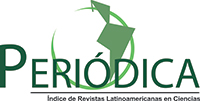HIGH-LEVEL DISINFECTANTS ALTERNATIVE TO GLUTARALDEHYDE FOR PROCESSING FLEXIBLE ENDOSCOPES
DOI:
https://doi.org/10.5380/ce.v19i3.35455Keywords:
Disinfection, Endoscopes, Glutaraldehyde, Toxicity.Abstract
Flexible endoscopes are fundamental in various
medical specialities; in general they are heat-sensitive, semicritical, and subject to high level disinfection. Glutaraldehyde
is largely used for this purpose, due to its high compatibility
and low-cost. However, its tolerance of mycobacteria and
occupational toxicity lead to pressure being applied for the
adoption of alternative germicides. A systematic review was
undertaken aiming to seek evidence regarding the effectiveness,
toxicity and potential harm caused to the endoscopes by those
germicides which are alternative to glutaraldehyde and which
are available on the market in Brazil. A total of 822 publications
was identified in 13 electronic databases, between 2008 and
2013. Of these, 23 studies were selected, considering the best
quality of evidence available. The publications point to the
superiority of peracetic acid and of orthophthaldehyde regarding
efficacy in high level disinfection. Only orthophthaldehyde
presented an adverse event clearly related to its use.
There is insufficient evidence to assert that any of these
germicides has greater potential for harm to the equipment.
Downloads
Published
How to Cite
Issue
Section
License
Cogitare Enfermagem reserves the right to make normative, orthographic, and grammatical changes to the published article to maintain the cultured standard of the language, while respecting the authors' style.
The published study is the sole responsibility of the author(s), and Cogitare Enfermagem is exclusively responsible for evaluating the manuscript as a scientific publication vehicle. Revista Cogitare Enfermagem is not responsible for any violations of Law No. 9,610/1998, the Brazilian Copyright Law.
Cogitare Enfermagem allows the author to hold the copyright of articles accepted for publication, without restrictions.
The articles published are licensed under the Creative Commons license CC BY 4.0 Creative Commons - Attribution 4.0 International - CC BY 4.0 - The attribution adopted by Cogitare Enfermagem is permitted:
- Share - copy and redistribute the material in any media or format.
- Adapt - remix, transform and build upon the material for any purpose, even commercially.
- Attribution - You must give proper credit, provide a link to the license, and indicate if changes have been made. You may do this in any reasonable way, but not in a way that suggests that the licensor endorses it or approves of its use.
- No additional restrictions - You may not apply legal terms or technological measures that legally restrict others from doing something that the license allows.






















